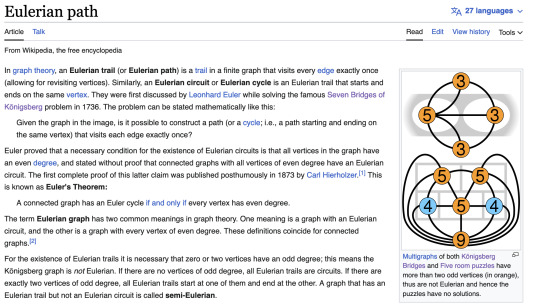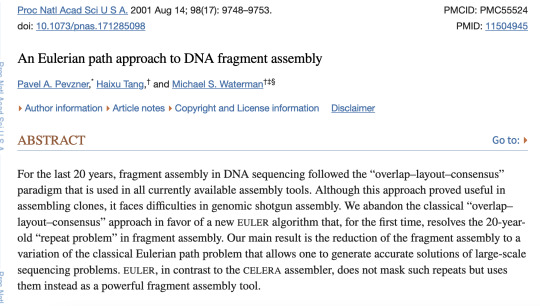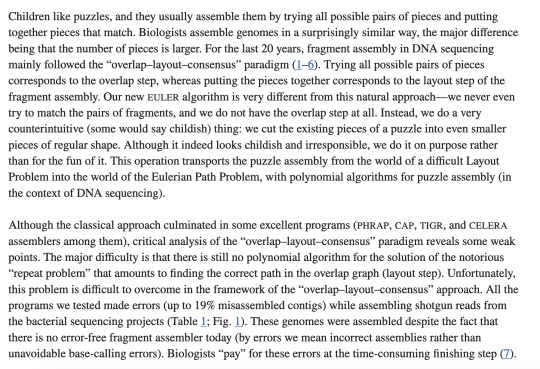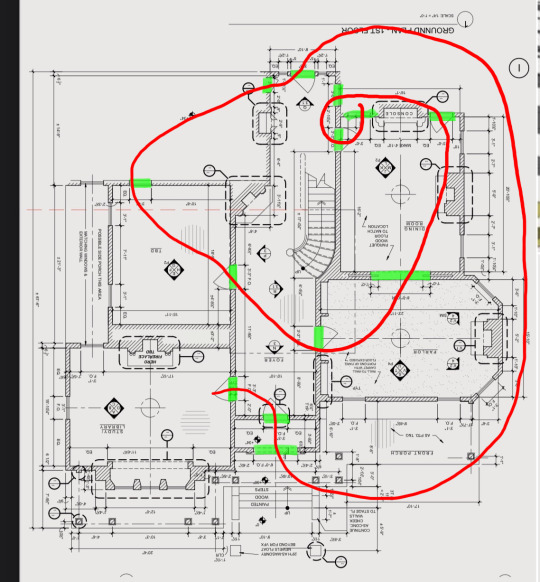#Eulerian cycle
Text
What is it with the Duffers and Numbers
Because I'm me and I can't rest until I've parsed out number shit with dates in Stranger Things...I decided to use OEIS to see if there was an kind of pattern in important dates.
Our important dates being:
1959 -- Creel Murders
1971 -- Willel Birth Year
1979 -- HNL Massacre
1983 -- Mothergate
1985 -- Keygate
1986 -- The Rifts
From here, I decided to find duration differences between events.
March 1959 -> (?) 1971 = 12 ≤ x ≤ 13 years
(?) 1971 -> Sept. 1979 = 8 ≤ x ≤ 9 years
Sept. 1979 -> Nov. 1983 = 4 < x < 5 years
Nov. 1983 -> July 1985 = 1 < x < 2 years
July 1985 -> March 1986 = 0 < x < 1 year
This is where OEIS came in handy.
If we round down, we get 0, 1, 4, 8, 12.
This sequence includes all relevant ages for El and the Creels:

Henry and Alice are 12 and 15 respectively when the Creel murders happen. Henry's Virginia is 36. Henry's Victor is 40.
Edward and Virginia, are also presumably 12 and 15 when their Creel murders happen. Edward's Victor is listed as being 35. Edward's Alice has no age listed.
Born in 1947, Henward were 24 when El was born.
El and Henward are 8 and 32 respectively when the first gate opens.
El and Henward are 12 and 36 respectively when Mothergate opens.
El is 15 or close to it when Vecward, now 39, opens the Rifts.
The Mindflayer, while not being a gate-opening event, occurred in '84, which also appears in the sequence.
That's really freaky on its own.
However, If we round up, we get: 1, 2, 5, 9, 13. This sequence is known as the Euler Path:

What makes this so interesting is a) it's a well known pattern (if you're a math nerd you've heard of it before. Suzie would absolutely know this pattern), and b) it has Implications™
Essentially, the Euler Path/Circuit is the longest single, non-overlapping path between two points.

Being a biology nerd myself, my favorite Stranger Things science connection is this:


The Eulerian path is routinely used, nowadays, to reconstruct genomic sequences for ancestry tracking/taxonomic tracking. It's essentially a highly-accurate, DNA-based version of what Dustin did with D'art in ST2. It's an algorithmic puzzle-solving strategy.
The most relevant connection is actually tied to the definition of a Eulerian Path/Cycle, and that is:
Timelines, The Missing Creel Door, the 5-Room Puzzle.
As we've seen in Em's post here, the very structure of the Creel house changes in the show:

A founding puzzle related to the Euler Paths theory is the 5-Room Puzzle.


Now, our house has six rooms, including the foyer/hallways, which makes it slightly different from the 5-Room Puzzle. I was able to find a variety of solutions to each, and there was one pattern that emerged:


They're almost the same, but based on the odd-evenness of the door assignments...they're distinctly different. Each path variation in Edward's house begins in the chess room. Each path variation in Henry's house begins in Victor's study. Both end in this odd, unseen console/kitchen area.
They start differently, separated by a wall. Edward's house has the doorway between those starting rooms, Henry's does not. It doesn't matter. They both end up in the same room.
I'm working on finalizing a look at the loops and cycles version of these paths, and I'm fairly sure there's a pattern in there too, but I have to nail down a couple of other details before I go posting them.
62 notes
·
View notes
Text
Graph Theory Assignment 5 Solution
1. The dodecahedron graph is depicted below:
Determine, with justification, whether is Eulerian.
Show that is Hamiltonian by finding a Hamilton cycle.
Let be the graph depicted to the right:
Find a 4-coloring of .
Show that no 3-coloring of exists.
3. The graph 3 × 3 is depicted below. Show that this graph is not Hamiltonian. One approach: Show that any Hamilton path must begin and end at…

View On WordPress
0 notes
Text
Graph Theory Assignment 5 Solution
The dodecahedron graph is depicted below:
Determine, with justification, whether is Eulerian.
Show that is Hamiltonian by finding a Hamilton cycle.
Let be the graph depicted to the right:
Find a 4-coloring of .
Show that no 3-coloring of
The graph 3 × 3 is depicted below. Show that this graph is not Hamiltonian. One approach: Show that any Hamilton path must…

View On WordPress
0 notes
Text
CPTS553 Assignment5 Solved
The dodecahedron graph 𝐺 is depicted below:
Determine, with justification, whether 𝐺 is Eulerian.
Show that 𝐺 is Hamiltonian by finding a Hamilton cycle.
Let 𝐻 be the graph depicted to the right: A. Find a 4-coloring of 𝐻.
Show that no 3-coloring of 𝐻 exists.
The graph 𝑃3×𝑃3 is depicted below. Show that this graph is not Hamiltonian. One approach: Show that any Hamilton path must begin and…

View On WordPress
0 notes
Link
0 notes
Text
Eulerian Graphs
Eulerian Graphs are a classification of combinatorial graphs in which there exists a closed trail that includes every edge of the graph (a closed trail is a way to traverse a graph in which all edges traversed are distinct, and the starting vertex is the ending vertex). This trail is referred to as the Eulerian Trail of a graph.
The name Eulerian Graph comes from Leonhard Euler, who wrote a paper in 1735 on the Königsberg Bridge Problem, a famous problem that asks if you can cross each of these seven bridges and return to your starting point. This problem, which was solved by Euler in his paper is the same as asking whether this figure has an Eulerian trail. Another typical problem on this topic may ask whether a graph can be drawn without lifting the pencil or backtracking.
This leads to perhaps the first theorem in graph theory and the first proof in the study of networks, credited to Euler; that states that a connected graph is Eulerian if and only if the degree of each vertex is even. We can see that this is true because for any vertex you pass through when traversing the graph there will be two edges you traverse, and since every edge must be traversed and you have to start and end at the same vertex, every vertex has an even degree. Going the other direction, if every vertex has even degree, then the graph has a cycle (a proven result). Then using induction, it can be shown that by removing an edge and finding an Eulerian trail in this smaller graph, and then adding the edge back in, there will be an Eulerian trail in the original graph.
Following from Eulerian graphs are semi-Eulerian graphs. These are graphs which have a non-closed Eulerian trail, or in other words, every edge is traversed but the starting and ending points are different. Semi-Eulerian graphs have exactly two vertices of odd degree, the starting and ending point. This can be proven in a similar fashion.
We can also note that it is impossible for a graph to have only one vertex of odd degree by the Handshaking lemma --credited to Euler as well. The Handshaking lemma states that the total degree of any graph must be even. This because every edge is connected to two vertices, and this implies that the total degree of a graph is twice the number of edges and therefore even.
Next we can apply these same definitions and theorems to directed graphs, noting that an Eulerian digraph must be strongly connected, meaning that the outdegree (arcs pointing out from a vertex) and the indegree (arcs pointing towards a vertex) must be equal for any vertex in the graph.
Infinite Eulerian graphs are connected countably infinite graphs that contain a two-way infinite trail that contain every edge. The necessary and sufficient conditions are altered slightly to account for the infinite components of the graph, but still require every vertex to have even degree.
A similar problem arising after the Königsberg Bridge problem is the five rooms problem where you have to go through five rooms and get back to where you started without backtracking. This is impossible since when this scenario is turned into a graph, with vertices being the rooms and edges being walls, there are vertices of odd degree.
Problems concerning Eulerian graphs are often related to recreational mathematics and drawing games, but there are some very important applications as well. In 2001, a group of biologists used Eulerian trails to better understand DNA fragment assembly.
Graph Theory is a relatively new area to be explored in mathematics, but its foundations date back to the mid 1700s with Euler. By looking at the Bridge problem and the Handshaking lemma in an abstract way, he laid the basis for modern graph theory, which in turn is the basis for thinking in computer science.
1 note
·
View note
Text
Seven Bridges of Königsberg
Koenigsberg bridges KoenigsbergBridges The Königsberg bridge problem asks if the seven bridges of the city of Königsberg (left figure; Kraitchik 1942), formerly in Germany but now known as Kaliningrad and part of Russia, over the river Preger can all be traversed in a single trip without doubling back, with the additional requirement that the trip ends in the same place it began. This is equivalent to asking if the multigraph on four nodes and seven edges (right figure) has an Eulerian cycle. This problem was answered in the negative by Euler (1736), and represented the beginning of graph theory.
#mathematics#maths#graphic design#geometric#topology#science#mental math#fiction#geometria#geometry#sacred geometry#interesting#algebra#mathemayjicks#mathematiques#scientology#scientific illustration
3 notes
·
View notes
Text
123-321 Models of Classical Novae. (arXiv:1912.08443v1 [astro-ph.SR])
High-resolution spectroscopy has revealed large concentrations of CNO and sometimes other intermediate-mass elements in the shells ejected during nova outbursts, suggesting that the solar composition material transferred from the secondary mixes with the outermost layers of the underlying white dwarf during the thermonuclear runaway. Multidimensional simulations have shown that Kelvin-Helmholtz instabilities provide self-enrichment of the accreted envelope with material from the outermost layers of the white dwarf, at levels that agree with observations. However, the Eulerian and time-explicit nature of most multidimensional codes used to date and the overwhelming computational load have limited their applicability, and no multidimensional simulation has been conducted for a full nova cycle. This paper explores a new methodology that combines 1-D and 3-D simulations. The early stages of the explosion (i.e., mass-accretion and initiation of the runaway) have been computed with the 1-D hydrodynamic code SHIVA. When convection extends throughout the entire envelope, the structures for each model were mapped into 3-D Cartesian grids and were subsequently followed with the multidimensional code FLASH. Two key physical quantities were extracted from the 3-D simulations and subsequently implemented into SHIVA, which was used to complete the simulation through the late expansion and ejection stages: the time-dependent amount of mass dredged-up from the outer white dwarf layers, and the time-dependent convective velocity profile throughout the envelope. More massive envelopes than those reported from previous models with pre-enrichment have been found. This results in more violent outbursts, characterized by higher peak temperatures and greater ejected masses, with metallicity enhancements in agreement with observations.
from astro-ph.HE updates on arXiv.org https://ift.tt/2PA3ni1
0 notes
Text
Graph Theory Assignment 5 Solution
The dodecahedron graph is depicted below:
Determine, with justification, whether is Eulerian.
Show that is Hamiltonian by finding a Hamilton cycle.
Let be the graph depicted to the right:
Find a 4-coloring of .
Show that no 3-coloring of
The graph 3 × 3 is depicted below. Show that this graph is not Hamiltonian. One approach: Show that any Hamilton path must…

View On WordPress
0 notes
Text
CS Homework 2 Solution
CS Homework 2 Solution
An Eulerian cycle of a graph G is a path which starts and ends on the same vertex and traverses every edge in the graph exactly once.
We have seen that an undirected connected graph G = (V, E) such that all the vertices have even degrees has an Eulerian cycle. Give an O(jEj) time algorithm to find it.
A directed graph is strongly connected if every vertex is reachable from every other vertex.…

View On WordPress
0 notes
Photo

I have to confess that I don’t really know, if childeren in other countries play this game, but in Germany we draw the “house of Saint Nicholas”. And children are saying the syllables
“Das-ist-das-Haus-vom-Ni-ko-laus.”
(Translation: “This-is-the-house-of-Ni-cho-las.”)
for each line they draw, while they draw a house in the way which is shown above. The only rules are the following:
1.) You have to draw the lines without lifting the pen.
2.) You have to draw "complete” straight lines .
There are several ways to do this.
Graph theory sayes something about the existence of drawing such an object. In Graph theory we consider a bunch of vertices which are connected with edges (lines). The Graph for the “Haus vom Nikolaus” is shown in the picture.

The way of drawing the house described above is called an Eulerian trail, i.e. a value of the form
v1 e1 v2 e2 v3 ... e(n-1) v(n)
where e1,...,e(n-1) are the edges and v1,...,vn are the vertices. Such a value has the special property as an Eulerian trail that we go no edge twice or more times.
We also need to know the degree of a vertex. The degree of a vertex is the number of edges which lead to this vertex. For example the degree of the edges of the “Haus vom Nikolaus” is shown in the picture.
One can show the following: If the degree of all edges is even, then there exists an Eulerian cycle, i.e. an Eulerian trail which starts and ends at the same vertex. An Eulerian trail (which is not an Eulerian cycle) exists, if the degree of two edges is odd and the degree of the other edges is even.
If we consider the graph of the “Haus vom Nikolaus”, we see that we have two edges of odd degree (3) and three edges of even degree (2 and 4). So we have an Eulerian trail which is not an Eulerian cycle. This means, that we can draw the “Haus vom Nikolaus” considering the rules described above.
Another interesting object is the problem of the Seven Bridges of Königsberg (1736). You can find a graph decribing the problem. With the rules we formulated above for an Eulerian trail, you can easily check, if it is possible to find a way over the 7 bridges without going a bridge twice or more times. Here is the link of this interesting historic problem which Euler solved:
https://en.wikipedia.org/wiki/Seven_Bridges_of_K%C3%B6nigsberg
1 note
·
View note
Text
CS Homework 2 Solution
CS Homework 2 Solution
An Eulerian cycle of a graph G is a path which starts and ends on the same vertex and traverses every edge in the graph exactly once.
We have seen that an undirected connected graph G = (V, E) such that all the vertices have even degrees has an Eulerian cycle. Give an O(jEj) time algorithm to find it.
A directed graph is strongly connected if every vertex is reachable from every other vertex.…

View On WordPress
0 notes
Text
CS Homework 2 Solution
CS Homework 2 Solution
An Eulerian cycle of a graph G is a path which starts and ends on the same vertex and traverses every edge in the graph exactly once.
We have seen that an undirected connected graph G = (V, E) such that all the vertices have even degrees has an Eulerian cycle. Give an O(jEj) time algorithm to find it.
A directed graph is strongly connected if every vertex is reachable from every other vertex.…

View On WordPress
0 notes
Text
On a practical note, J. Kåhre observes that bridges bb and dd no longer exist and that aa and cc are now a single bridge passing above A with a stairway in the middle leading down to A. Even so, there is still no Eulerian cycle on the nodes A, B, C, and D using the modern Königsberg bridges, although there is an Eulerian path (right figure). An example Eulerian path is illustrated in the right figure above where, as a last step, the stairs from A to aacc can be climbed to cover not only all bridges but all steps as well.
#mathematiques#mathemayjicks#mental math#maths#mathematics#math#mathematician#algebra#science#fiction#interesting#incredible
1 note
·
View note
Text
Homework 2 Solution
An Eulerian cycle of a graph G is a path which starts and ends on the same vertex and traverses every edge in the graph exactly once.
We have seen that an undirected connected graph G = (V, E) such that all the vertices have even degrees has an Eulerian cycle. Give an O(jEj) time algorithm to find it.
A directed graph is strongly connected if every vertex is reachable from every other…
View On WordPress
0 notes